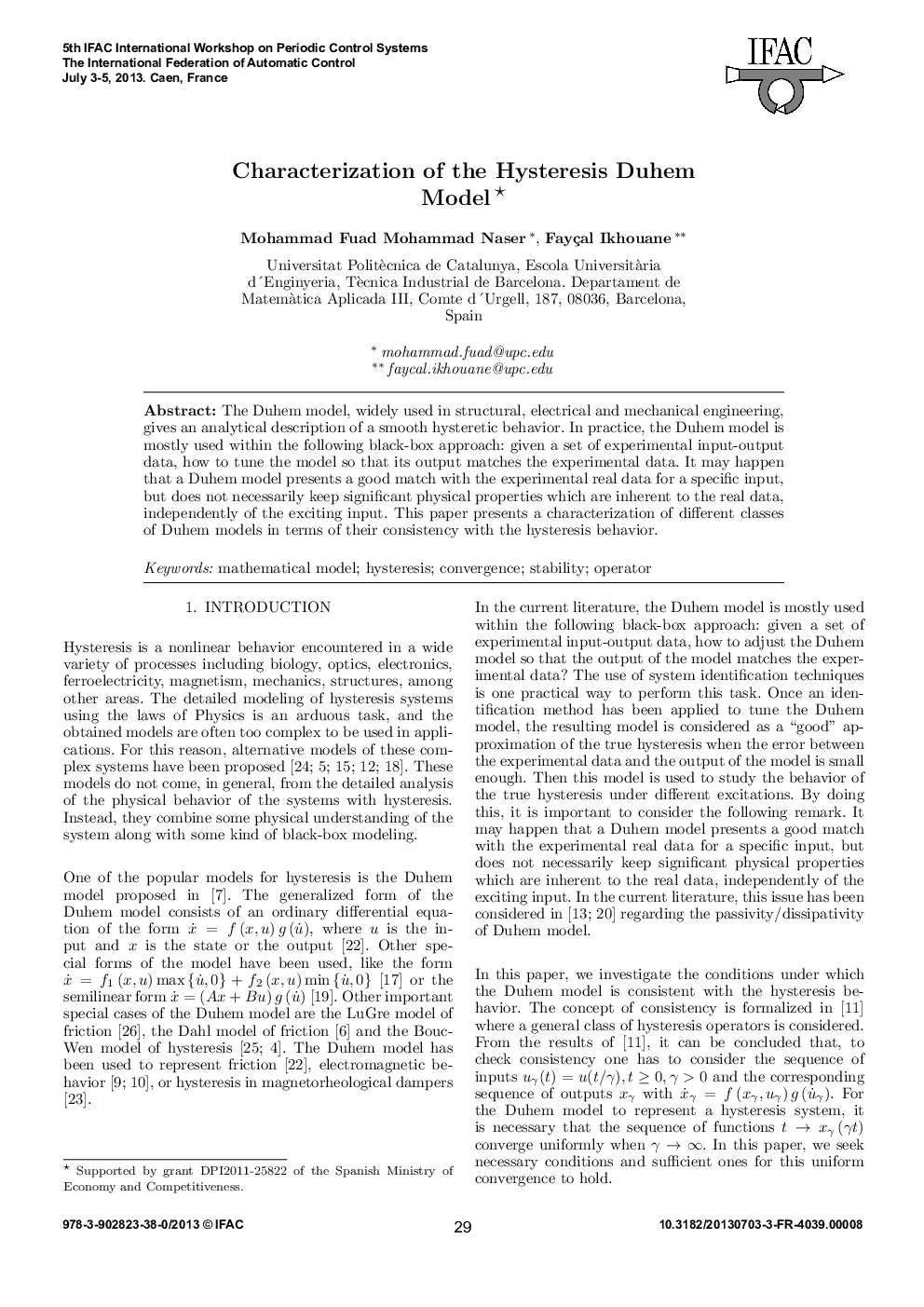| Article ID | Journal | Published Year | Pages | File Type |
|---|---|---|---|---|
| 709411 | IFAC Proceedings Volumes | 2013 | 6 Pages |
Abstract
The Duhem model, widely used in structural, electrical and mechanical engineering, gives an analytical description of a smooth hysteretic behavior. In practice, the Duhem model is mostly used within the following black-box approach: given a set of experimental input-output data, how to tune the model so that its output matches the experimental data. It may happen that a Duhem model presents a good match with the experimental real data for a specific input, but does not necessarily keep significant physical properties which are inherent to the real data, independently of the exciting input. This paper presents a characterization of different classes of Duhem models in terms of their consistency with the hysteresis behavior.
Related Topics
Physical Sciences and Engineering
Engineering
Computational Mechanics
